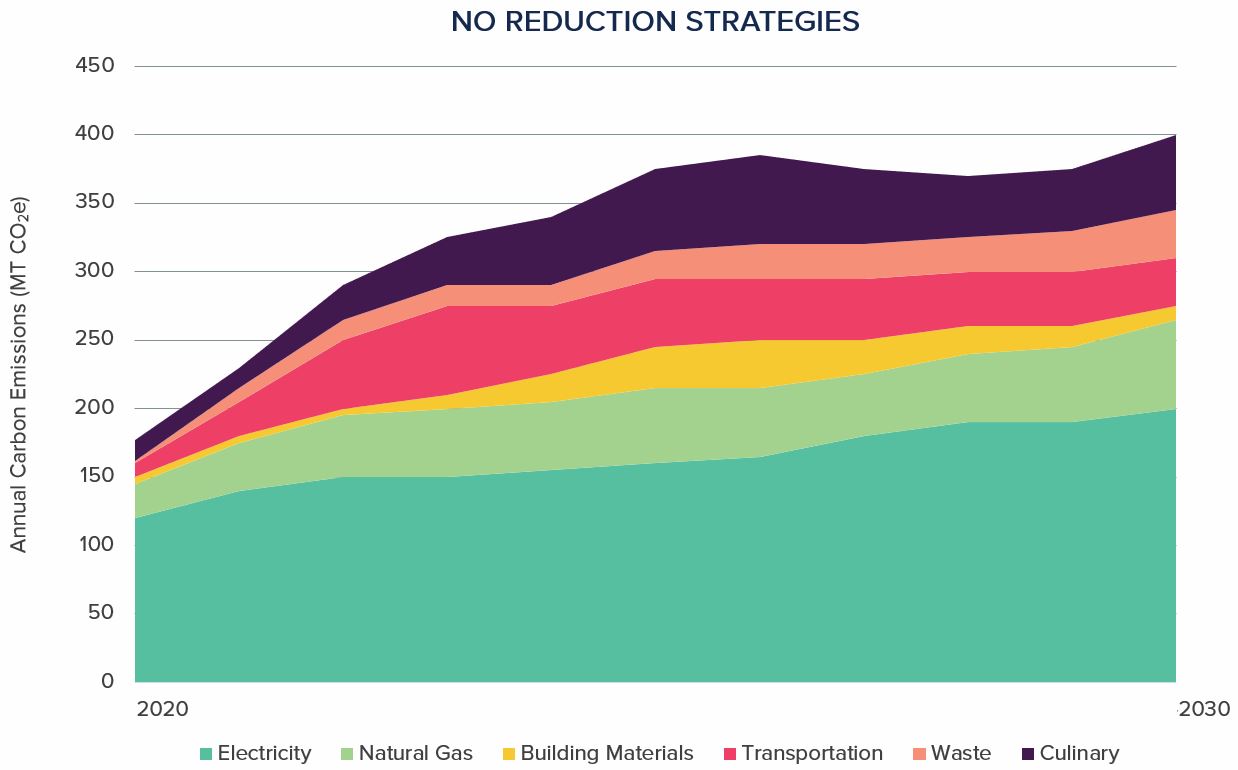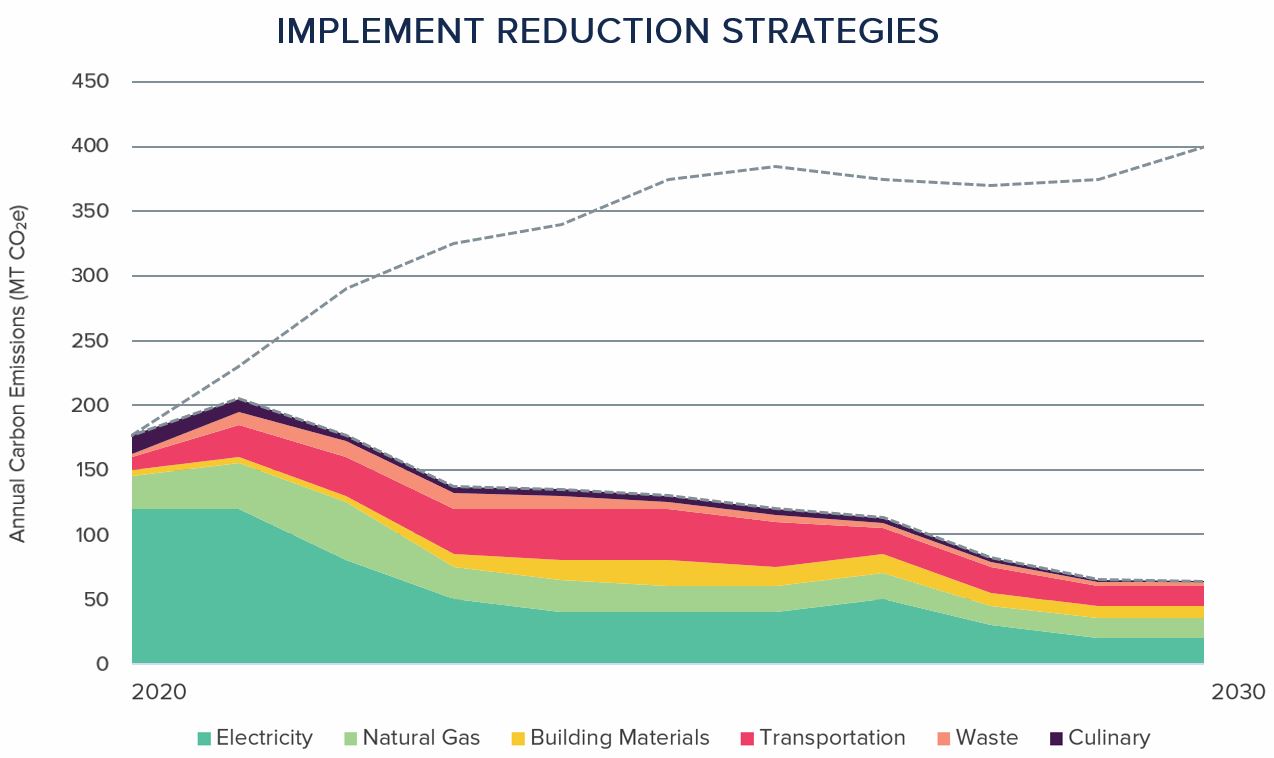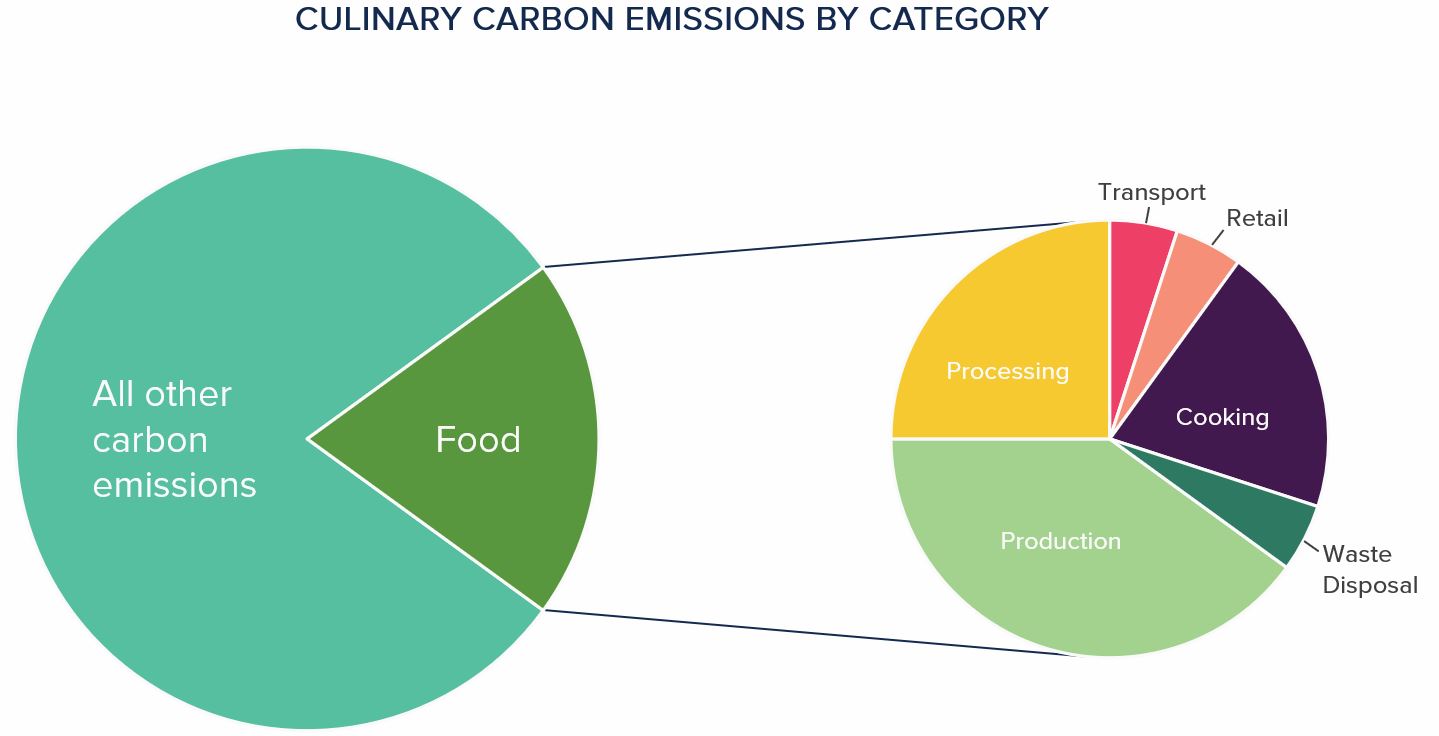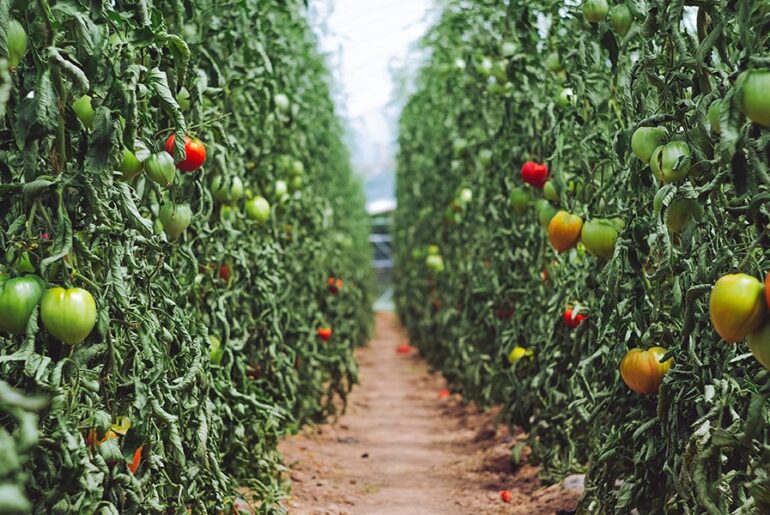Food has made its way into the workplace. In an effort to attract and retain top talent, many companies have taken to the Silicon Valley trend of offering free or subsidized snacks and meals as an employee benefit, and networking events and educational programs alike often feel incomplete without a sprawling selection of crudité or charcuterie.
With cafeterias and catering expanding at work, so are companies’ foodprints—the environmental impact associated with the full lifecycle of a piece of food. If companies care about reducing their environmental impact, food should be on the table. Fortunately, as Silicon Valley tech companies are leading the charge on zero carbon buildings and operations, we’ve worked with many that are starting to incorporate their culinary programs into their carbon reduction strategies.
If your company provides food to employees and/or visitors, whether through occasional catered external events or a full three meals a day, it’s time to think about how food can tie into your corporate sustainability goals. Use the ideas below as a starting point for crafting your company’s Culinary Carbon Program.
#1: ALIGN WITH EXISTING CARBON REDUCTION EFFORTS
Companies forging the path toward zero carbon through their real estate portfolios must go beyond scope one and two emissions. While electricity and natural gas are typically the largest contributors to a company’s building carbon emissions, a comprehensive carbon strategy explores four additional categories for impact: building materials, transportation, waste, and culinary.
Treat culinary emissions like you would any other category to assess the opportunity for impact and prioritize strategies that align with your corporate sustainability goals. In practice, this can look like the hypothetical company’s baseline carbon emissions and subsequent reduction target below:


#2: DON’T FORGET THE DATA
Carbon emissions associated with food are found in six key areas: production, process, transport, retail, cooking, and waste disposal. By analyzing carbon emissions data for each of these categories, companies can identify where they can have the greatest impact while aligning changes with their existing sustainability plan. This may look like the following hypothetical company’s culinary carbon emissions broken down into the six key categories:

#3: ASSESS DIFFERENT PROGRAM PATHWAYS
There are many pathways companies can take to address their unique foodprint through a Culinary Carbon Program. Here are a few of the most common approaches companies are taking now—as both comprehensive efforts and a la carte—to reduce their culinary carbon foodprint.
Electrification & Composting in Facilities:
Over 50 U.S. cities have or are exploring building electrification mandates or incentives. One of the largest barriers to this shift is the prevalence of gas stoves. Going all-electric in your kitchens by swapping in electric stoves not only proactively prepares your building for upcoming electrification mandates but helps align your culinary carbon program with other sustainable real estate initiatives. Including easily accessible compost bins on every floor, as well as opting for compostable kitchenware when single-use products are necessitated, are also common strategies for facilities.
Campaign-Based Planning:
For companies unsure where to focus, run scenarios for different campaigns to figure out what changes will have the greatest impact. Common scenarios Stok has analyzed include “Meatless Mondays” or replacing red meat with white meat companywide, which help companies develop a detailed plan for carbon reduction. It’s popular for companies to launch these types of campaigns during a celebratory occasion like Earth Month.
Educational Signage & Materials:
Providing transparent information about the carbon emissions associated with different types of food allows people to make informed decisions about their meals. Stok helped a client evaluate each menu item in their onsite cafeteria for its environmental impact and displayed results through a simple key: color-coding meals with red, orange, and green labels based on their carbon footprint. This simple categorization helps educate people about their daily food choices and empowers them to lessen their environmental impact through behavioral changes. This can be done virtually too: when employees are working at home, continue to share applicable recommendations and low-carbon recipes that people can make for themselves.
Community Support:
Companies can orient their culinary programs to support local communities and sustainable farming practices through programs like Restore California. In collaboration with Zero Foodprint, Stok recently helped a client meet the requirements for the Restore California program so that the money the company pays to offset carbon emissions from their food goes directly to fund regional carbon farming projects. To do this, companies must complete a two-step process:
1. Commit to source food from restaurants participating in the program.
2. Calculate the carbon emissions of their internal food program to know how much they need to offset.
While the effort started in San Francisco, the company is expanding the culinary carbon offsets to their New York and London offices as the Zero Foodprint movement continues to expand beyond the west coast.
Every culinary program is unique, so there’s no one-size-fits-all carbon reduction solution. While these tips don’t get into the meat of any one company’s specific program, they should provide some best practices for how to approach creating a Culinary Carbon Program. Now that you’ve gotten the juices flowing, (car)bon appétit!


